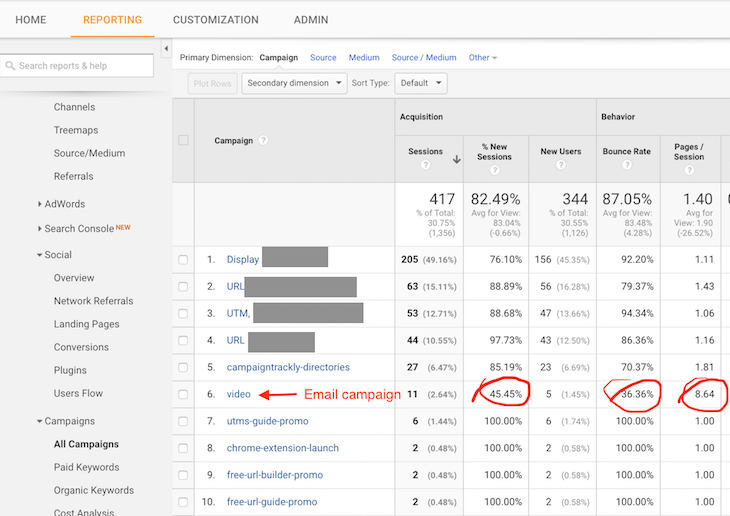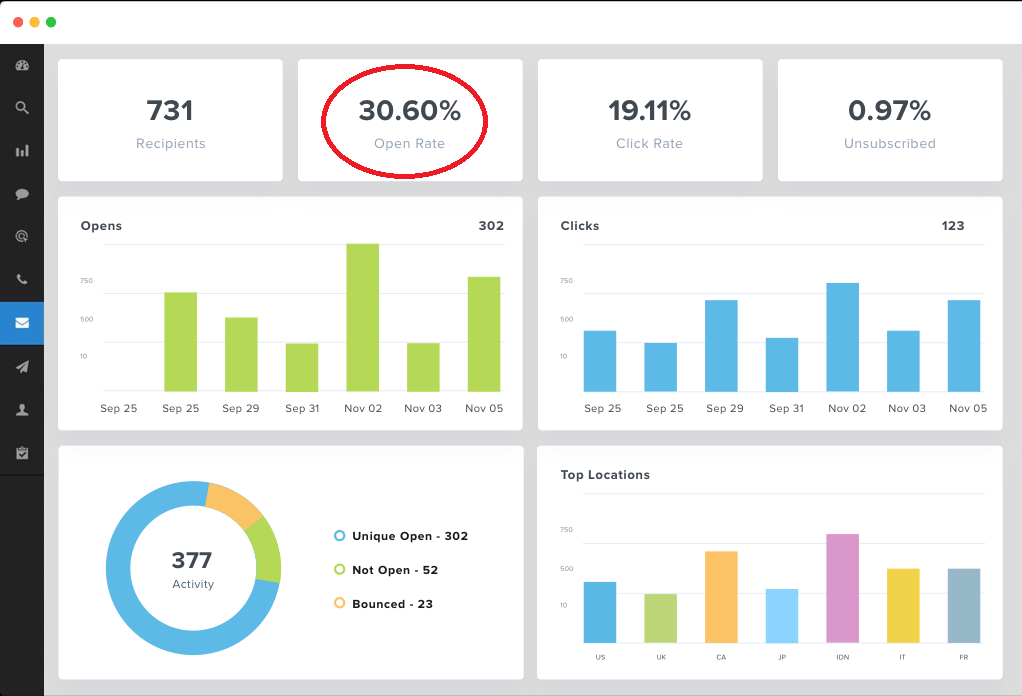Improve engagement with smart Email Performance Analytics. Track open rates, clicks, and deliverability to boost your campaigns. Use XemailAudit for real-time insights.

Credit: www.smartinsights.com
Introduction To Email Performance Analytics
In today’s digital world, email performance analytics plays a big role in improving your marketing success. It helps you track how well your emails perform, showing important data like whether your messages reach the inbox or go to spam. By understanding this data, you can optimize your email strategy and connect more effectively with your audience.
One powerful tool for this is XemailAudit, an AI-powered email analytics platform. It monitors your email deliverability in real time, so you always know exactly where your emails are landing. XemailAudit also checks for spam triggers and reputation issues, helping you craft cleaner, more engaging emails that actually get opened.
Using email performance analysis gives you deep insights into what’s working — and what’s not. You can identify which subject lines attract the most clicks, which campaigns perform best, and how to avoid spam filters. These insights make your emails more effective and consistent.
With tools like XemailAudit, you can generate detailed reports, understand audience engagement, and take data-driven actions to improve results. In short, email performance analytics helps you save time, use your resources wisely, and reach more people successfully.
By mastering your email performance, you’ll not only boost deliverability but also build stronger relationships with your subscribers — turning every campaign into a smart, measurable success.

Credit: www.singlegrain.com
Key Features Of Email Performance Analytics Tools
Real-time tracking and reporting give instant insights into email campaigns. XemailAudit offers real-time deliverability monitoring. It tracks if emails land in the inbox, spam folder, or bounce. This helps in making quick adjustments.
Segmentation and personalization insights help target the right audience. XemailAudit integrates with platforms like Smartlead, Instantly, and Mailchimp. This allows for more personalized email campaigns. Better targeting leads to higher engagement.
A/B testing allows comparing two versions of an email. XemailAudit uses an AI writing assistant. It helps draft emails that avoid spam triggers. This makes A/B testing more effective and insightful.
Deliverability and bounce rate analysis show if emails reach recipients. XemailAudit provides automated audits and regular reports. These include DNS configuration and blacklist status checks. This helps improve inbox placement.
Pricing And Affordability Of Email Analytics Tools
Email performance analytics tools come in various price ranges to suit different budgets. Affordable options provide essential insights, while premium versions offer advanced features for in-depth analysis.
Overview Of Pricing Models
Most email analytics tools offer various pricing models. Some charge a monthly fee. Others offer lifetime access for a one-time payment. It’s important to compare what each plan includes. Basic plans often have limited features. Advanced plans provide more insights and integration options. Always check if there are hidden costs, like fees for additional domains or emails.
Comparison Of Popular Tools
| Tool | Pricing | Features |
|---|---|---|
| XemailAudit | From $79 for lifetime access | Real-Time Monitoring, AI Writing Assistant, Integrations, Email Audits |
| Tool B | $50/month | Basic Monitoring, Limited Integrations |
| Tool C | $100/year | Advanced Reporting, Custom Integrations |
Assessing Value For Money
Consider the value each tool provides. XemailAudit offers lifetime access starting at $79. This includes real-time monitoring, AI tools, and email audits. Some tools may charge monthly but offer fewer features. Think about long-term costs and benefits. A one-time payment could save money over time. Also, look for tools with free trials or money-back guarantees to test their effectiveness.

Credit: www.getresponse.com
Pros And Cons Of Using Email Performance Analytics
Email Performance Analytics provides valuable insights. It helps improve email campaigns. Real-time monitoring allows quick adjustments. AI tools reduce spam risks. Integration with other platforms saves time. Automated audits offer detailed reports. Improved inbox placement boosts engagement.
Email analytics may have some limits. Initial setup can be complex. Data accuracy depends on various factors. Cost may be high for small businesses. Frequent updates are needed for best results. Learning curve can be steep for new users.
Recommendations For Ideal Users And Scenarios
Email performance analytics benefit marketing teams and businesses tracking campaign success. Small businesses gain insights into customer engagement. Ideal for users aiming to optimize email strategies.
Best Practices For Marketers
Marketers should use XemailAudit to improve inbox placement. The platform offers real-time deliverability monitoring. It tracks if emails land in the inbox or spam folder. AI writing assistant helps draft emails. This reduces the chance of emails being flagged as spam. Integrations with tools like Smartlead and Mailchimp are available. These integrations make monitoring and auditing easy. Regular email audits provide actionable insights. These insights include DNS configuration and blacklist status checks. Marketers can use these insights to optimize email campaigns.
Scenarios Where Email Analytics Is Most Beneficial
Email analytics is useful in many scenarios. One scenario is during a new product launch. Real-time monitoring ensures emails reach the inbox. Another scenario is when re-engaging inactive subscribers. AI tools help draft engaging emails. They reduce spam triggers. Email audits are also helpful during peak marketing seasons. Regular reports maintain and improve email deliverability. This ensures high open rates and engagement. Marketers can rely on these tools to achieve their goals.
Frequently Asked Questions
How To Track Email Performance?
Track email performance using tools like Google Analytics, Mailchimp, or HubSpot. Monitor open rates, click-through rates, and conversion rates. Analyze bounce rates and unsubscribe rates. Use A/B testing to optimize subject lines and content. Regularly review reports to improve future campaigns.
What Are Key Performance Indicators For Emails?
Key performance indicators for emails include open rates, click-through rates, bounce rates, conversion rates, and unsubscribe rates. Tracking these metrics helps measure the effectiveness of your email campaigns.
What Is Email Analytics?
Email analytics involves tracking and analyzing email campaign data. It helps you measure open rates, click-through rates, and conversions. This data improves future email marketing strategies.
What Is A Good Ctr For Email?
A good CTR for email typically ranges between 10% and 15%. This can vary by industry and campaign type.
Conclusion
XemailAudit offers essential tools for effective email campaigns. This platform ensures your emails reach the inbox, avoiding spam folders. With real-time monitoring and AI assistance, your email strategy stays optimized. The integration with popular email tools simplifies monitoring and reporting.
XemailAudit’s pricing is competitive and offers a 60-day money-back guarantee. Improve your email deliverability today with XemailAudit.




